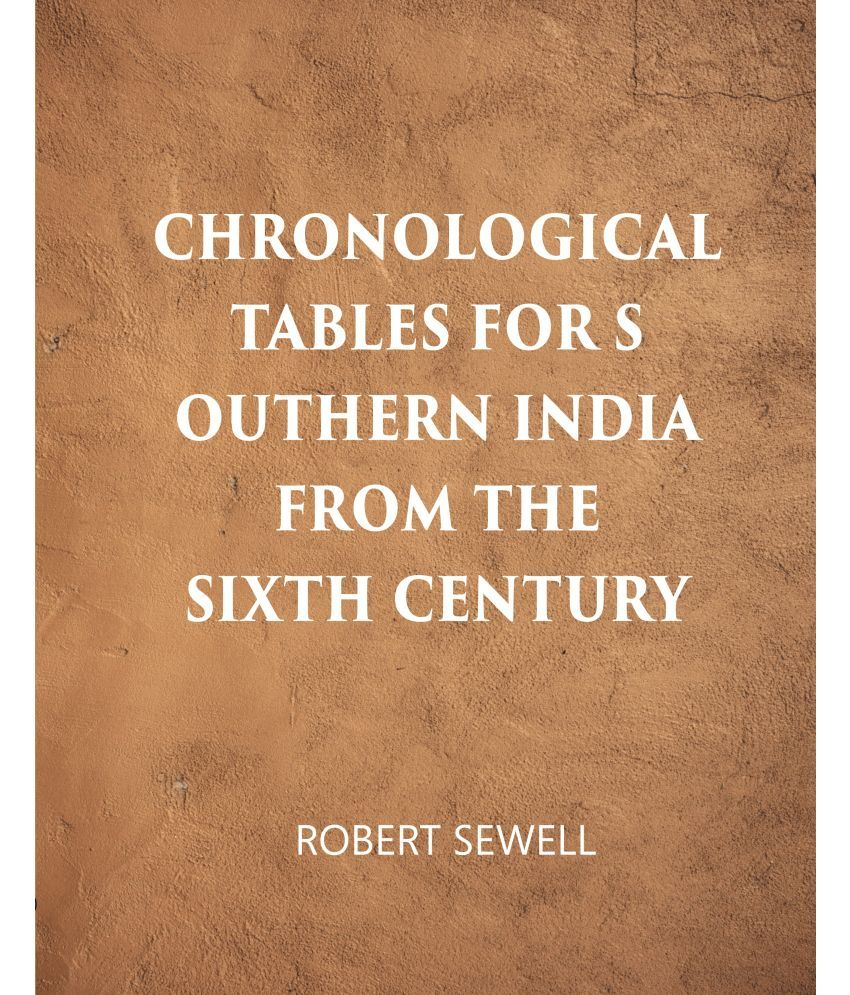About the book:-These tables are published for those at work with inscriptions and historical documents in Southern India to understand the dates mentioned in stone. Dates from the 6th century are given here in tables that tell the corresponding date in the Salivahana Saka era, Kaliyuga era, the Kollam era, the Christian era as well as the Hijri dates.TheseTables are published in order to enable those at work on the Inscriptions of Southern India readily to ascertain the date of any document, or record on stone. The Salivahana Saka era being the one most commonly used, it is placed in the first column. The Kaliyuga era is very commonly nsertedin addition to the first, especially in the later inscriptions. The Kolla'm era of Quilon is only used in the Southern Tamil country and in Travaneore. The name of the cyclic year occurs in almost all the inscriptions of Southern India since the tenth century.The year of the Hijra is only used in Muham¬madan inscriptions. Burnell’s “South Indian Palaeography ”(pp. 70—80) contains some very useful, notes on the eras in use in the Madras Presidency. Prinsep’s “Indian Chronological Tables,” inThomas’s edition of the former’s “Indian Antiquities ” (Vol. II, pp. 131—214), constitute the mostcritically accurate information yet published on the subject. Taking the Saka, Kaliyuga, and cyclic years—which may be considered, for all ordinary purposes, to commence and finish simultaneously—as his base, he has thought it best to approximate the other eras to these, rather than to approximate all eras to the Christian, as is often done. And, since the Saha,Kaliyuga,and cyclic years may be considered to commence together about March each year, it follows that the Kollam of Quilon, which commences about September, runs half with one, and half with another of the former years; while the Christian year, commencing in January, runs three-quarters with one, and a quarter with the following of those standard years. About the Author:-Robert Sewell (1845–1925) worked in the civil service of the Madras Presidency during the period of colonial rule in India. He was Keeper of the Madras Record Office and was tasked with responsibility for documenting ancient inscriptions and remains in the region. As with other British administrators of his type at that period, his purpose was not scholarly but rather to bolster administrative control by constructing a history that placed British rule as a virtue and a necessity rather than something to be denigrated. His specialism was the Vijayanagara Empire, about which he authored A Forgotten Empire Vijayanagar: A Contribution to the History of India (1900). The Title 'Chronological Tables For Southern India From The Sixth Century A.D. written/authored/edited by Robert Sewell', published in the year 2021. The ISBN 9788121221658 is assigned to the Paperback version of this title. This book has total of pp. 48 (Pages). The publisher of this title is Gyan Publishing House. This Book is in English. . Size of the book is 21.59 x 27.94 cms Vol:-

